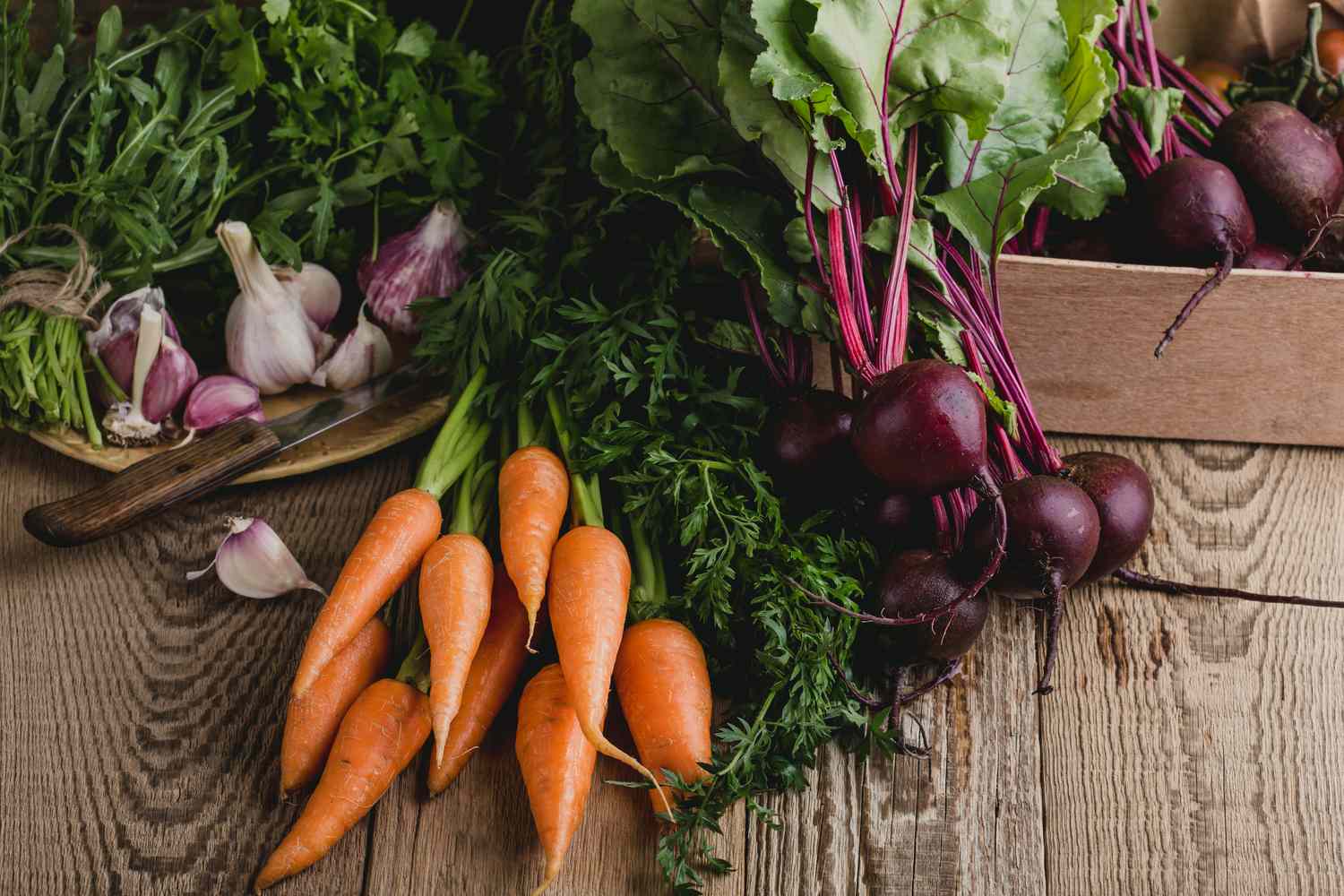The weather is steadily getting colder, but that doesn’t mean gardening has to come to an end. There are a handful of vegetables, for example, that can thrive even when planted in October. The result? A “second spring” in the fall—a time when you can enjoy delicious, homegrown vegetables even when it’s chilly outside.
Of course, not all vegetables will thrive in colder climates. Here, we spoke to experts about the varieties they recommend growing in October—and those that can withstand low temperatures.
Lettuce
joannatkaczuk / Getty Images
It’s delicious in your salads, and it’s perfect for fall planting. Angela Judd, founder of Growing in the Garden, recommends direct sowing lettuce every 1 to 2 weeks for a steady harvest. The new seeds will need frequent watering.
There are even advantages to growing lettuce in autumn, rather than in spring. “Fall-grown lettuce is sweeter, and the leaves are crisper than spring crops in my hot climate,” she adds.
- Time to harvest: Baby leaves in 25 to 30 days, full heads in 45 to 60 days
- Zone: 2 to 11
- Size: 6 to 12 inches tall
- Care requirements: Full or partial sun; loamy, rich, well-draining soil; water frequently
Radish
Radishes are easy to grow and will be ready to harvest very quickly. The cooler fall weather will keep them crisp and mild, too. “I tuck radishes between slower crops,” adds Judd. “They’re ready just as the bigger plants need the space.”
- Time to harvest: 25 to 35 days
- Zones: 2 to 11
- Size: 4 to 8 inches tall x 6 to 9 inches wide
- Care requirements: Full sun; loose soil
Carrots
Tatiana Maramygina / Getty
Carrots are a great cold-weather crop, as chilly evenings can help concentrate sugars in the plant; mild frost will improve their sweetness. Judd recommends keeping the seedbed uniformly moist until the seeds sprout—and thin them early.
“I like using a layer of burlap to hold in moisture and help seeds germinate,” she says. “I fill any empty spots in my beds with carrots so we have plenty to eat and enjoy.”
- Time to harvest: 60 to 90 days, depending on the variety
- Zones: 3 to 9
- Size: 12 to 18 inches tall x 1 to 2 inches wide
- Care requirements: Full sun; moist, well-draining soil
Beets
Fotomary/Getty Images
Beets “grow steadily in cool weather, and sweeten after a light frost,” says Judd. Make sure to keep the beets evenly moist for tender roots. The best part? Both the greens and the roots are delicious ingredients that work well in many flavorful recipes.
- Time to harvest: Greens in 25 to 30 days, roots in 50 to 70 days
- Zones: 2 to 10
- Size: 8 to 10 inches tall x 12 inches wide
- Care requirements: Full sun; light soil to encourage the tubers to develop
Arugula
Arugula matures quickly and thrives when the nights are cool, making it the perfect fall crop. Judd recommends planting it every 10 to 14 days—make sure not to let the plants dry out.
“I grow arugula to top homemade pizza,” she says. “I also leave some to flower for pollinators while we wait for spring blooms.”
- Time to harvest: Baby leaves in 20 to 25 days, matures in 35 to 45 days
- Zones: 3 to 11
- Size: 8 to 36 inches tall x 12 to 18 inches wide
- Care requirements: Full sun; rich, well-draining soil
Swiss Chard
alvarez / Getty Images
Swiss chard “doesn’t mind a warm fall,” says Judd, and can even thrive during a mild winter. She recommends harvesting its outer leaves regularly so that it continues to produce.
“[It makes] reliable greens all winter and even into early summer,” she says. “What we don’t eat, the chickens happily gobble up.”
- Time to harvest: Baby leaves in 25 to 30 days full size in 50 to 60 days
- Zones: 2 to 11
- Size: 12 to 24 inches tall x 9 to 18 inches wide
- Care requirements: Full sun; fertile, well-draining soil
Rhubarb
Getty Images
Ginny Rosenkranz, master gardener at the University of Maryland, recommends planting rhubarb in October. It’s a hardy perennial, so it will survive the winter and can tolerate cold temperatures. It’s best to plant in late autumn or winter—make sure to pull away the leaves when they collapse.
- Time to harvest: 90 days
- Zones: 3 to 8
- Size: 2 to 3 feet tall
- Care requirements: Full to part sun; well-draining soil; water regularly
Garlic
Aksana Zavadskaya / Getty Images
Garlic can be planted from October to November, notes Rosenkranz. Plant cloves in beds after the first frost has passed—it does best in cool soil. Since it’s such a versatile ingredient, it will be a welcome addition to your vegetable garden.
- Time to harvest: Varies by variety
- Zones: Varies by variety
- Size: 1 to 3 feet tall x 2 to 6 inches wide
- Care requirements: Full sun; moist, loamy soil

